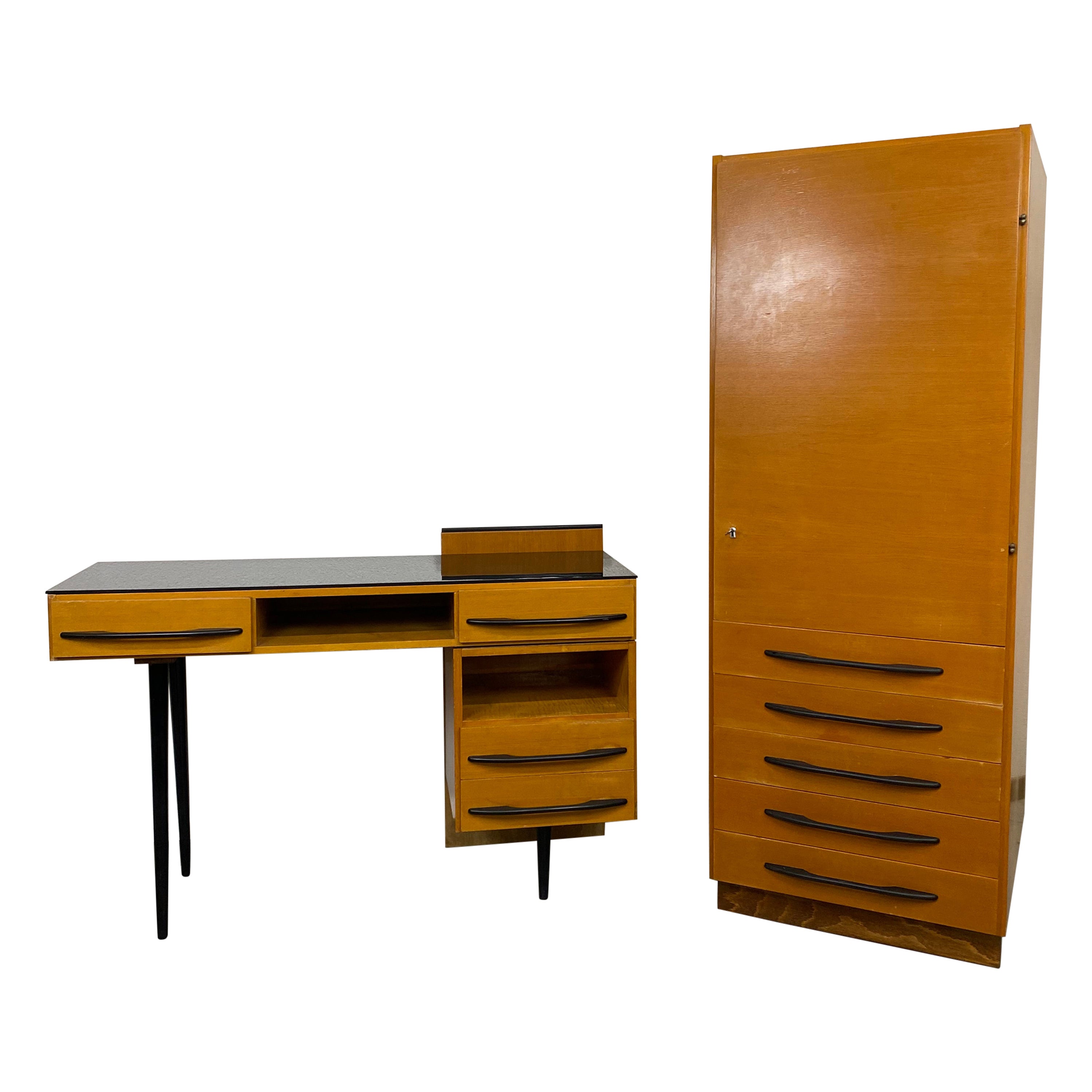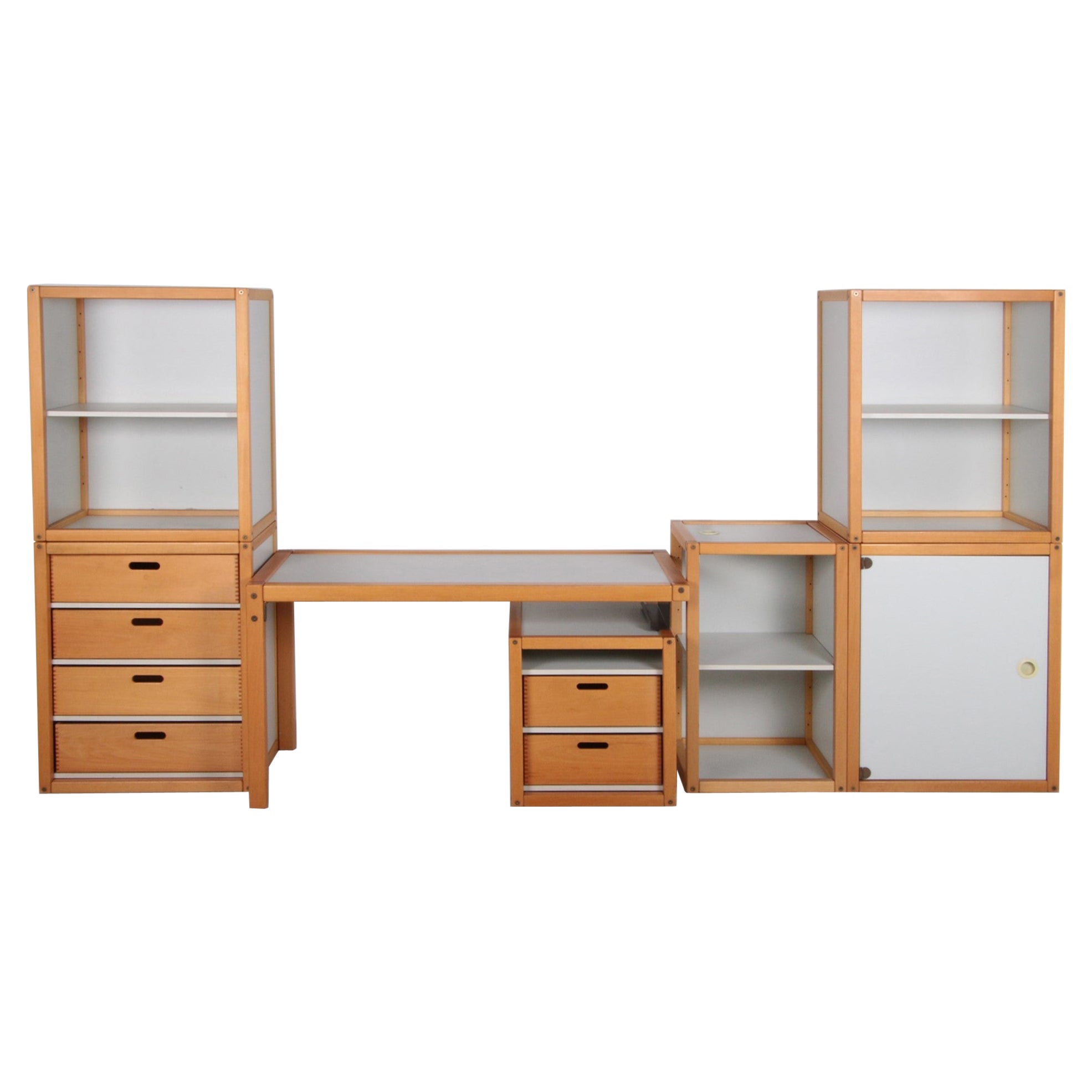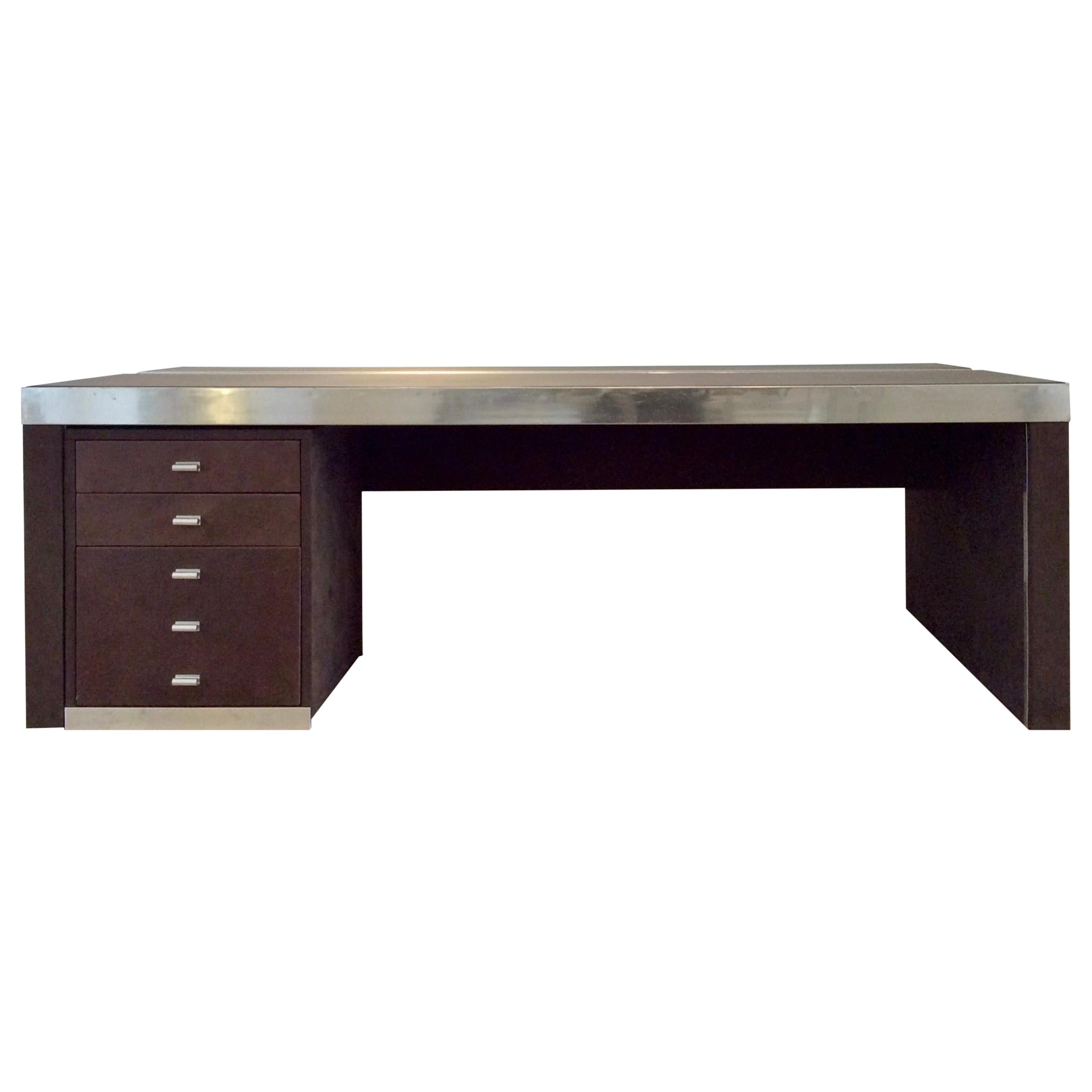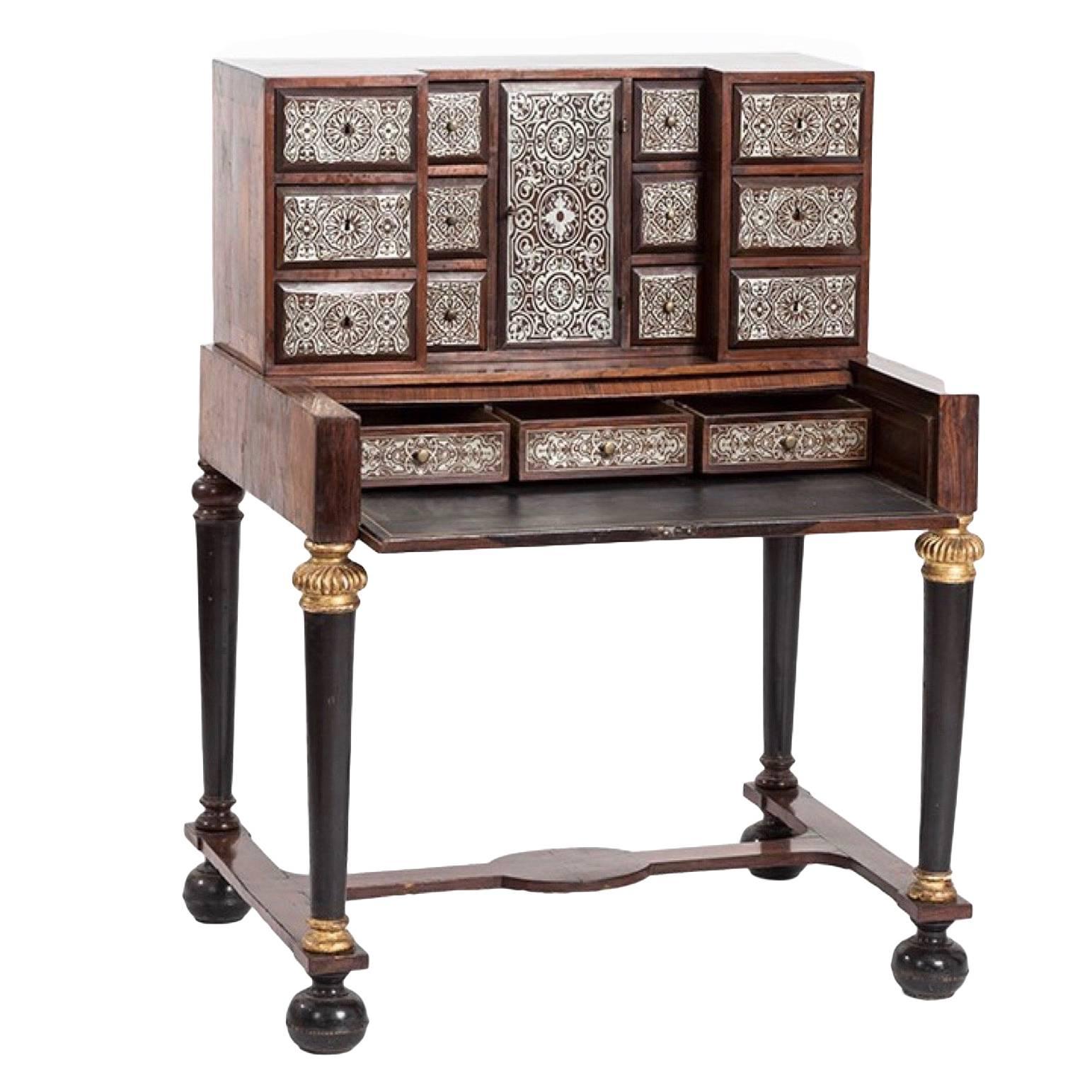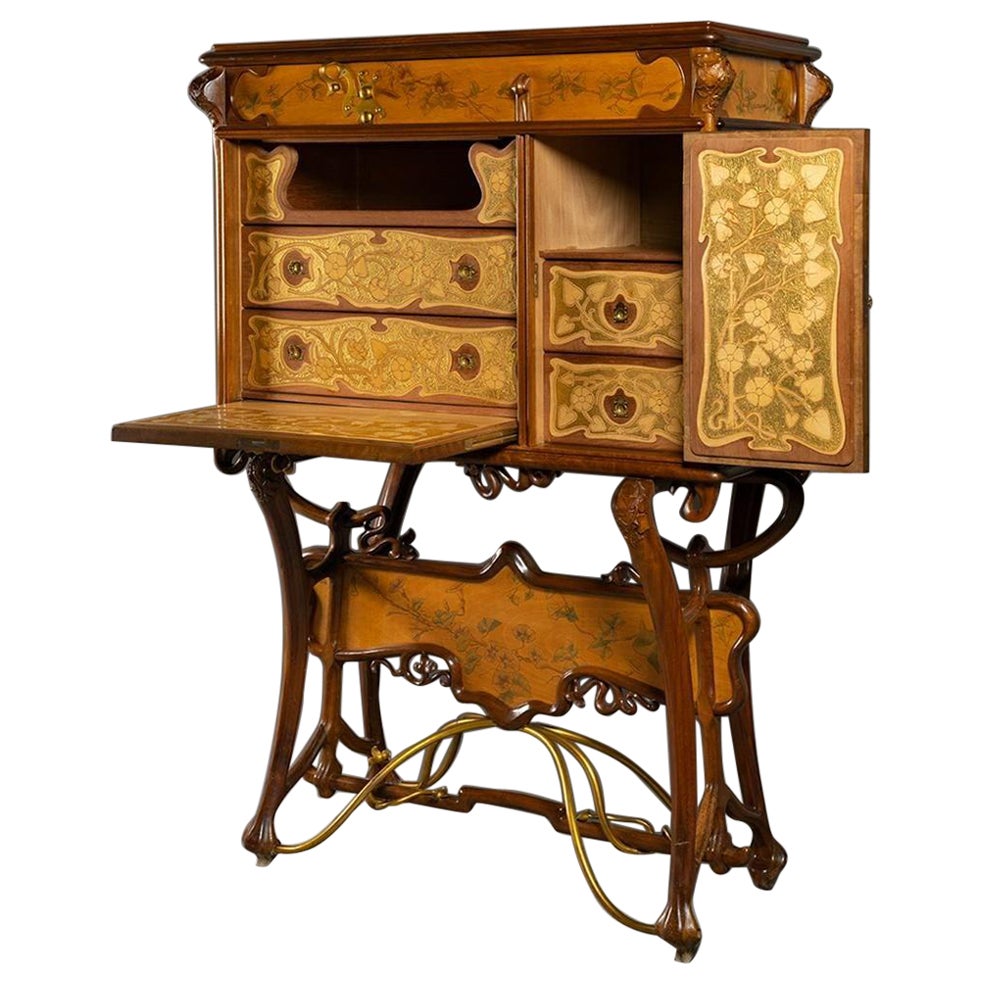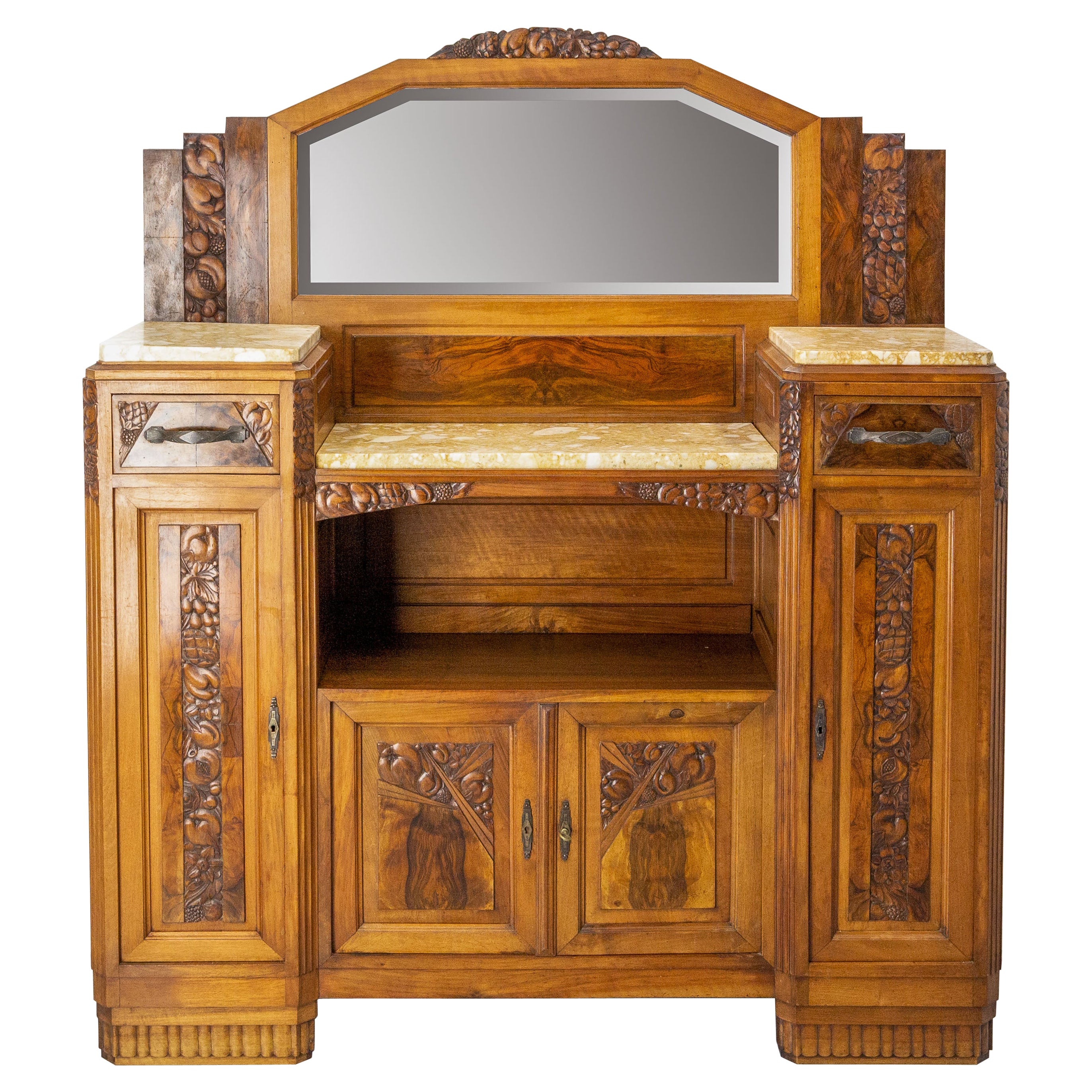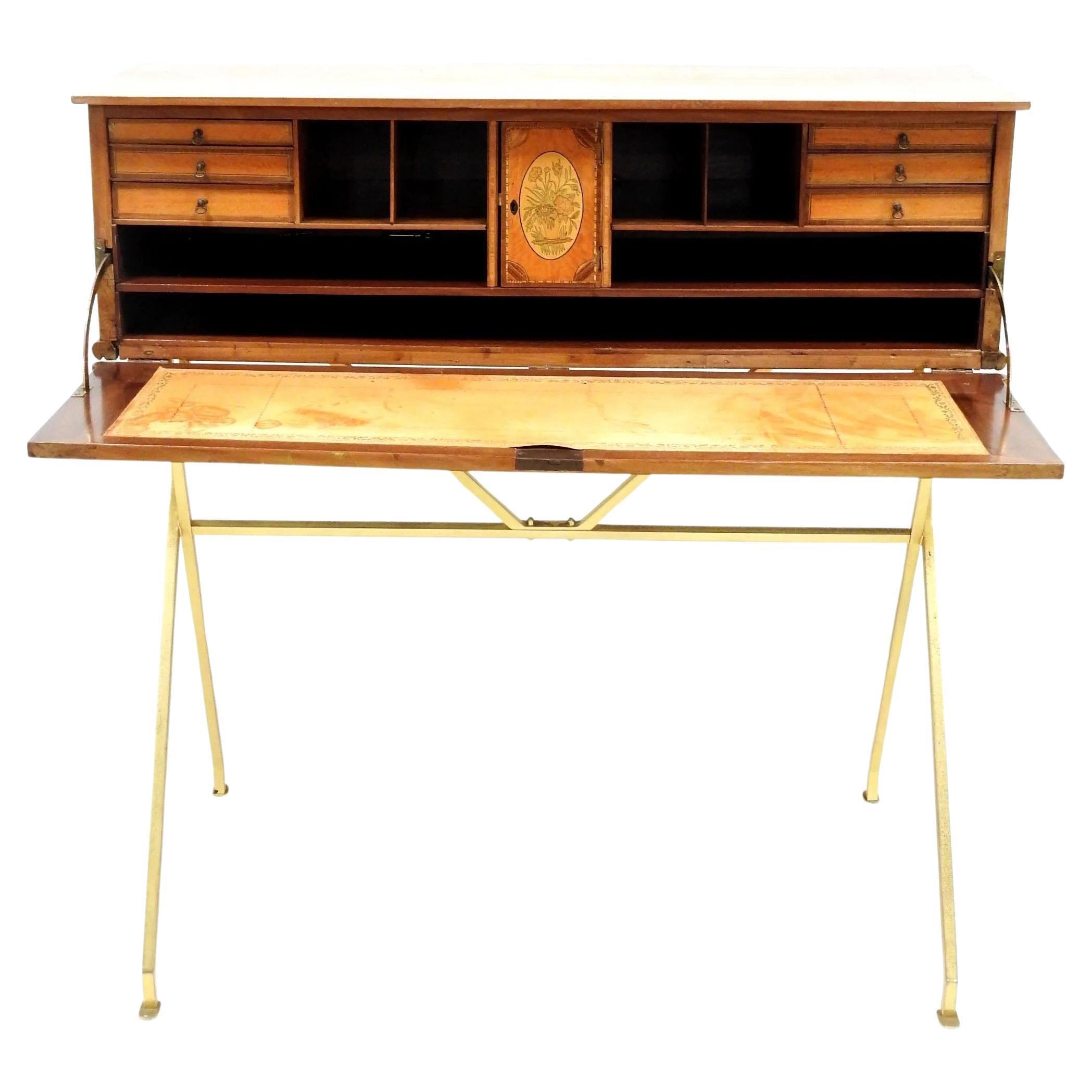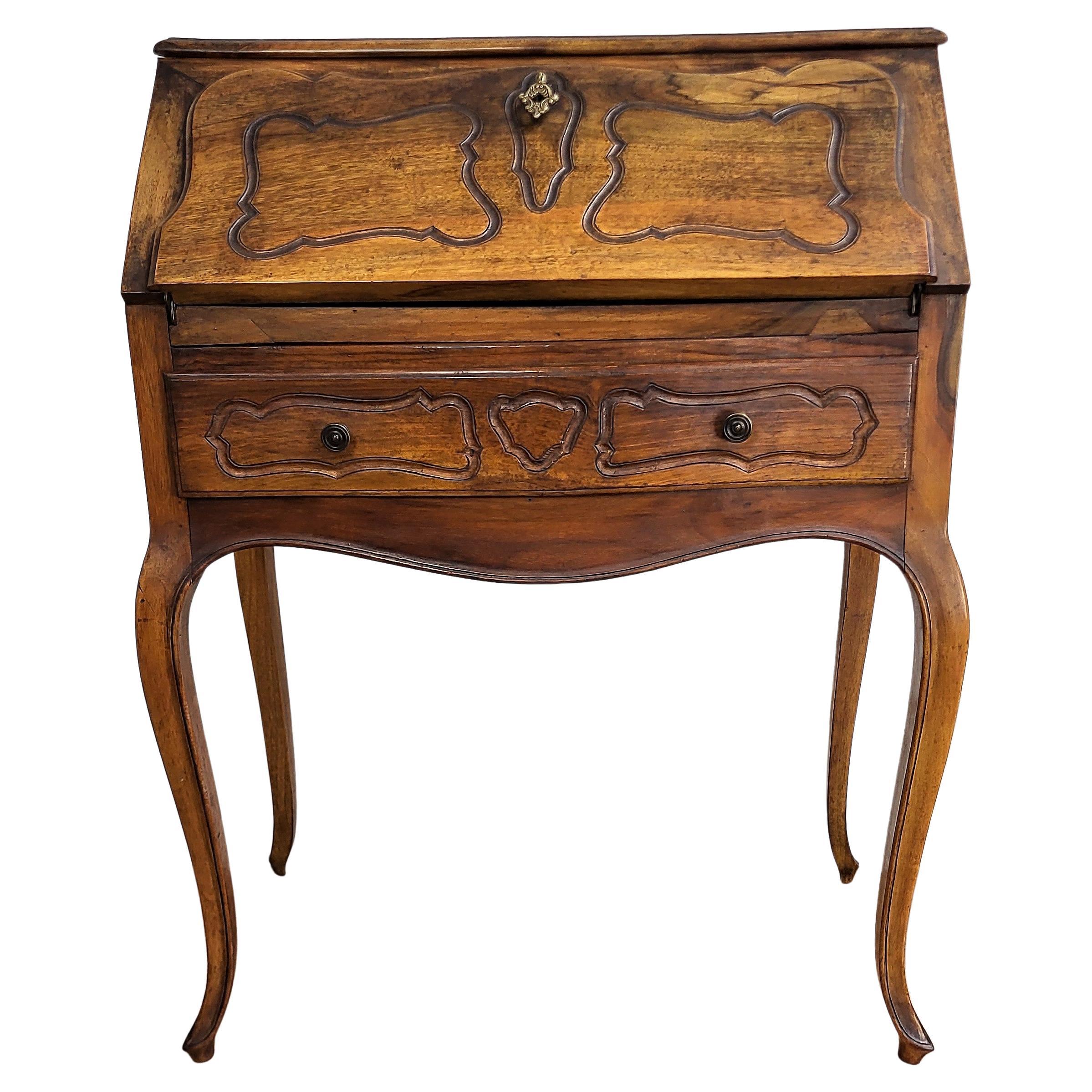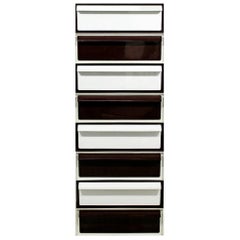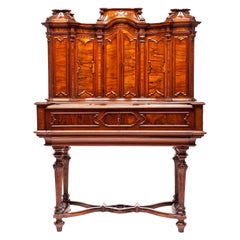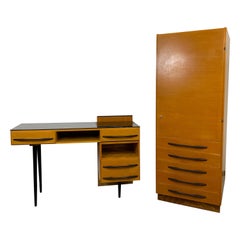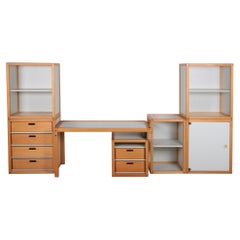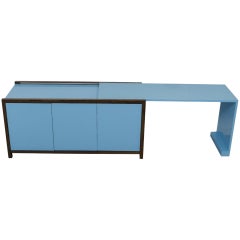
Dune New York ‘Lemans’ Sideboard Cabinet with Extendable Desk, 2000, Blue
View Similar Items
Want more images or videos?
Request additional images or videos from the seller
1 of 7
Dune New York ‘Lemans’ Sideboard Cabinet with Extendable Desk, 2000, Blue
About the Item
- Creator:Dune (Manufacturer),Jeffrey Bernett (Designer)
- Dimensions:Height: 28 in (71.12 cm)Width: 60 in (152.4 cm)Depth: 24 in (60.96 cm)
- Style:Post-Modern (Of the Period)
- Materials and Techniques:
- Place of Origin:
- Period:
- Date of Manufacture:2000
- Condition:Wear consistent with age and use. Good vintage condition. A]minor age appropriate surface wear: such as light scratches and edgewear.
- Seller Location:Brooklyn, NY
- Reference Number:1stDibs: LU4190313121161
About the Seller
5.0
Platinum Seller
These expertly vetted sellers are 1stDibs' most experienced sellers and are rated highest by our customers.
Established in 2017
1stDibs seller since 2018
593 sales on 1stDibs
Typical response time: 1 hour
More From This SellerView All
- Ladislav Rado White Enameled Steel Modern Desk, Vanity, 1955, Knoll and DrakeLocated in Brooklyn, NYLadislav Rado white enameled steel modern desk, Vanity, 1955, Knoll and Drake. Knoll and Drake produced a signature modern line of furniture for a few...Category
Mid-20th Century American Mid-Century Modern Desks and Writing Tables
MaterialsStainless Steel
$7,040 Sale Price20% Off - Simon Russell for Kartell 8 Drawer Stacking File Cabinet, 1970sBy KartellLocated in Brooklyn, NYSimon Russell for Kartell 8 drawer stacking file cabinet, 1970s. Incredible, eight drawer, stacking file cabinet, by Simon Russell for Kartell, circa 197...Category
Vintage 1970s Italian Mid-Century Modern Cabinets
MaterialsAcrylic
- Kartell Componibili 2-Tier Modern Storage Cabinet, Hot Pink, ItalyBy KartellLocated in Brooklyn, NYRare Componibili storage unit components in vibrant hot pink. Will come with 2 “body” units and 1 “top” The Componibili Storage Unit (1969) takes its name from componibile, Italian ...Category
Late 20th Century American Mid-Century Modern Cabinets
MaterialsPlastic, Acrylic
$660 Sale Price / item25% Off - Lo Studiolo di Ponziani Florentine Chinoiserie HandPainted Secretary Desk ItalyBy PonzianiLocated in Brooklyn, NYChinoiserie hand-painted secretary, Lo Studiolo di Ponziani, Florence, Italy. Chinoiserie painted secretary desk Ponziani Firenze. Painted brilliant lemon ...Category
Late 20th Century Italian Chinoiserie Secretaires
MaterialsWood
$3,600 Sale Price75% Off - St. Charles Mid-Century Modern Steel Kitchen Lower Cabinet, Original, 1940sLocated in Brooklyn, NYSt. Charles Mid-Century Modern steel lower kitchen cabinet, drawer, original, 1940s. Measures: 10" W x 30.5”H x 18.5" D. Features a single shelf separating top and bottom sections. ' This listing is for “E” in image 3. St. Charles was one of the earliest brands of steel cabinetry in the United States, dating back to 1935, when St. Charles bought Janes & Kirtland, maker of the “White House Line” steel. Steel kitchens were first developed in the second half of the 1920s and exclusive to extremely high-end (often exhibition) homes in the pre-WWII era. These early (pre-war) cabinets were quite streamlined and "deco" in their appearance. Typically white, ice gray or gentle cream color, they were customized to each home and considered the 'modern' and very "American" choice for the discerning client. Frank Lloyd Wright was an early fan of steel kitchen cabinets...Category
Vintage 1930s American Mid-Century Modern Cabinets
MaterialsSteel
- St. Charles Mid-Century Modern Steel Kitchen Cabinet Cutlery Drawers, 1940sLocated in Brooklyn, NYSt. Charles Mid-Century Modern steel kitchen cabinet drawers 1940s original finish. Wall mountable. Features original built in cutlery drawer. Se...Category
Vintage 1930s American Mid-Century Modern Cabinets
MaterialsSteel
You May Also Like
- Ancient Italian Writing Desk with Upper Cabinet, Milan, Circa 1730Located in Milano, ITWriting desk with upper cabinet Milan, first half of the 18th century Carved walnut partially veneered in olive wood and walnut burl; traces of eboniz...Category
Antique 1730s Italian Baroque Cabinets
MaterialsOlive, Walnut
- Writing Desk with Cabinet by Mojmír Požár for UP Závody BučoviceBy M. Požár, Up ZávodyLocated in Banská Štiavnica, SKWriting desk with cabinet by Mojmír Požár for UP Závody Bucovice in very good original condition with slight traces of usage. Dimensions of cabinet W:60cm...Category
Vintage 1960s Slovak Modern Desks and Writing Tables
MaterialsOpaline Glass, Wood
- Vintage Desk Set with Cabinets Designed by Elmar Flötotto for Flötotto, 1980sBy Elmar FlötottoLocated in Oostrum-Venray, NLThis German desk is part of the Profilsystem collection, designed by Elmar Flötotto for the Flötotto brand in the 1980s. The principle behind the Pr...Category
Vintage 1980s German Mid-Century Modern Desks and Writing Tables
MaterialsBeech
$3,529 Sale Price / set20% Off - 'Starblack' Desk and Cabinet by Guido Faleschini, 1970sBy Guido FaleschiniLocated in London, GBFor i4 Mariani, Italy Leather topped desk with recessed aluminium channel spanning the width. With companion cabinet with leather-faced drawers and aluminium drawer pulls. Desk legs...Category
Vintage 1970s Italian Desks and Writing Tables
MaterialsLeather
$16,062 / item - Gorgeous 18th Century Tin Marquetry Writing Desk/ CabinetLocated in Brussels, BE18th century tin marquetry writing desk.Category
Antique Early 18th Century German Louis XIV Desks and Writing Tables
MaterialsTin
- Joan Busquets Workshop Masterpiece Modernist Nouveau Desk Cabinet, ca. 1898Located in South Burlington, VTFrom Spain's Catalan Modernist Furniture Maker Joan Busquets Studio & Workshop A Unique work of Cabinetry Art. JOAN BUSQUETS I (Barcelona, 1874-1949). Modernist Cabinet and Desk, ca. 1898. Modernist desk and cabinet finely crafted from walnut wood with golden polychrome and pyrography. Keyholes, handles and decorative appliques in golden brass. Signed on the front in the lower left corner of the right door. Dimensions: 66 inches high and 46 inches wide and 24 inches deep; 165cm x 116cm x 60 cm This remarkable and unique Catalan modernist cabinet designed by famed furniture designer and maker, Joan Busquets was crafted at Studio Busquets. Barcelona, Spai ca 1898 from walnut wood with fine polychrome gold and decorated with pyrography- the first time in European history that saw this craftsmanship combination of fine studio furniture with fine pyrographic artistic technique. The keyholes, handles and decorative fixtures are made of gilded brass. This Catalan Modernist cabinet was constructed into two (2) sections. The lower cut-out base support section is raised on four stylized legs, with a perpendicularly placed table top- all creatively imagined in a totally sinuous form providing dynamism and originality to this unique design. The upper desk cabinet section has a triple opening, two with hinged doors, one from top to bottom that opens as a desk and the other from left to right revealing two drawers, as well as a top slide out drawer. The interior features several drawers of different sizes all beautifully embellished on their fronts in a golden color pyrography. The entire body of this cabinet desk furniture is richly decorated with typically art nouveau modernist stylized vegetal motifs executed with the artist Busquet's personal pyrography technique, and finally framed with sinuous moldings in relief. This is a superb furniture cabinet within the Catalan modernism genre, given that it was produced by one of the best studio workshops of that time, as well as for the perfection and meticulousness with which each of its details have been executed by artrist designer Busquet. Busquets' workshop was known to have crafted most of the furniture for Antoni Gaudí Casa Calvet, with this being a prime example. About Studio Busquet In 1898 Busquets y Jané introduced for the first time a new technique of polychrome pyrography. This replaced classical marquetry hand craft traditionally applied to furniure of the 19th century. This new design technique was first applied to this cabinet and dates circa 1898. The artist, designer, and decorator Joan Busquets personally hand applied pyrography to his furniture designs and was actively involved in this pyrographic technique widely known of that period as the "Busquets style". About La Casa Busquets: Furniture designer and decorator, Joan Busquets is currently considered one of the most representative artists of Spain's Catalan modernism. He began his training in his family workshop, and then studied at the Escuela de La Llotja in Barcelona, where his teachers were Guitart and Lostaló. In the 1895-96 academic year he obtained a scholarship that allowed him to travel around Spain, which he obtained thanks to a project for a Renaissance-style bookcase-cabinet. He exhibited furniture projects for the first time at the Barcelona Exhibition...Category
Antique 19th Century Spanish Arts and Crafts Cabinets
MaterialsWood, Walnut
Recently Viewed
View AllMore Ways To Browse
Shelf Filing Cabinet
Solid Wood File Cabinet
File Cabinet Sideboard
60 Wood File Cabinet
Carved Oak Furniture
Antique Kitchen Cabinets
Antique Kitchen Cabinet Antiques
Antique Kitchen Cabinet
Antique Kitchen Cabinet Antique Furniture
Antique Kitchen Cabinet Furniture
Antique Cabinet Kitchen
Antique Cabinets Kitchen
Kitchen Antique Cabinets
Kitchen Antique Cabinet
Storage Cabinets With Doors And Shelves
Brass Kitchen
Cabinet With Shelf
Antique Kitchen Storage Cabinet

